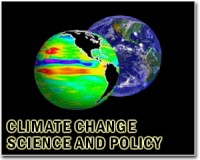| . |  |
. |
Knoxville TN (SPX) Jun 18, 2010 By examining 800,000-year-old polar ice, scientists increasingly are learning how the climate has changed since the last ice melt and that carbon dioxide has become more abundant in the Earth's atmosphere. For two decades, French scientist Jer�me Chappellaz has been examining ice cores collected from deep inside the polar ice caps of Greenland and Antarctica. His studies on the interconnecting air spaces of old snow - or firn air - in the ice cores show that the roughly 40 percent increase of carbon dioxide in the atmosphere since the Earth's last deglaciation can be attributed in large part to changes in the circulation and biological activity of the oceanic waters surrounding Antarctica. Chappellaz presented his findings in Knoxville, Tenn. during the Goldschmidt Conference, an international gathering of several thousand geochemists who converge annually to share their research on Earth, energy and the environment. The event, hosted by the University of Tennessee, Knoxville, and Oak Ridge National Laboratory, is taking place June 13-18. By measuring the carbon isotopes in the firn air, scientists can pinpoint the source of atmospheric carbon during the millennia. Because living organisms at the surface of the oceans tend to take up the lighter of the carbon isotopes, 13C, and this isotope is then released when the organisms decay, scientists know the higher concentration of 13C is originating from the oceans. Normally, the organisms die, sink to the ocean depths, and decompose, releasing carbon that remains stored in the cold, deep waters for centuries. But a growing concentration of the isotope 13C in the air during the last deglaciation indicates that this "old" carbon from decomposition was released from the southern polar waters, where the Antarctic Circumpolar Current transports more water than any other current in the world. Here, oceanic circulation is increasing in intensity and the deep water is releasing carbon dioxide at the surface. For two decades, Chappellaz has examined polar ice cores to decipher how the primary greenhouse gases - carbon dioxide, methane and nitrous oxide - have changed in concentrations and ratios since ancient times and what has caused those changes. He notably showed for the first time the tight link existing between atmospheric methane and global climate at glacial-interglacial time scales. Chappellaz is research director at the Laboratoire de Glaciologie et Geophysique de Environnement in Grenoble, France.
Share This Article With Planet Earth
Related Links University of Tennessee at Knoxville Climate Science News - Modeling, Mitigation Adaptation
 U.S. climate bill to shape U.N. talks
U.S. climate bill to shape U.N. talksWashington (UPI) Jun 16, 2010 Worldwide hopes for a comprehensive climate protection treaty hinge on whether U.S. President Barack Obama can push through an ambitious U.S. climate bill. At least that's what observers to the U.N. climate negotiations say. EU Climate Commissioner Connie Hedegaard, a former Danish climate minister and chairwoman of the Copenhagen climate summit, last month said it was key that t ... read more |
|
| The content herein, unless otherwise known to be public domain, are Copyright 1995-2010 - SpaceDaily. AFP and UPI Wire Stories are copyright Agence France-Presse and United Press International. ESA Portal Reports are copyright European Space Agency. All NASA sourced material is public domain. Additional copyrights may apply in whole or part to other bona fide parties. Advertising does not imply endorsement,agreement or approval of any opinions, statements or information provided by SpaceDaily on any Web page published or hosted by SpaceDaily. Privacy Statement |